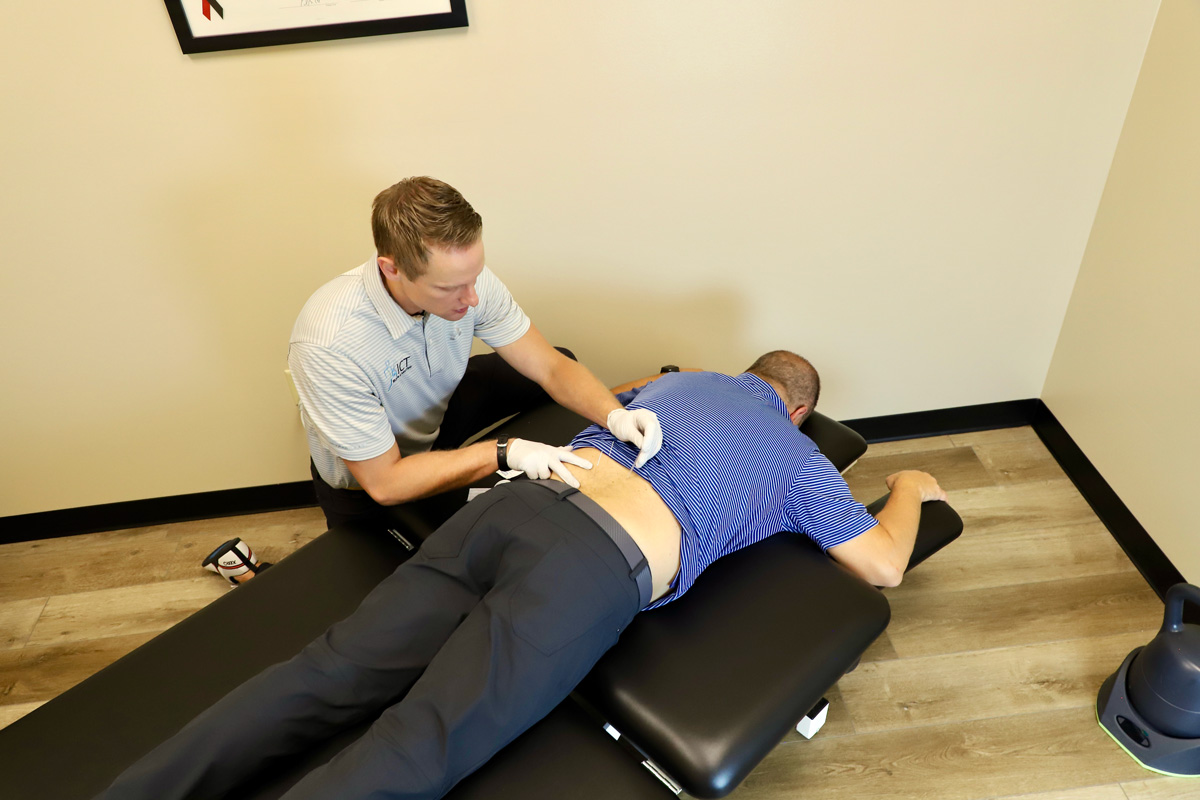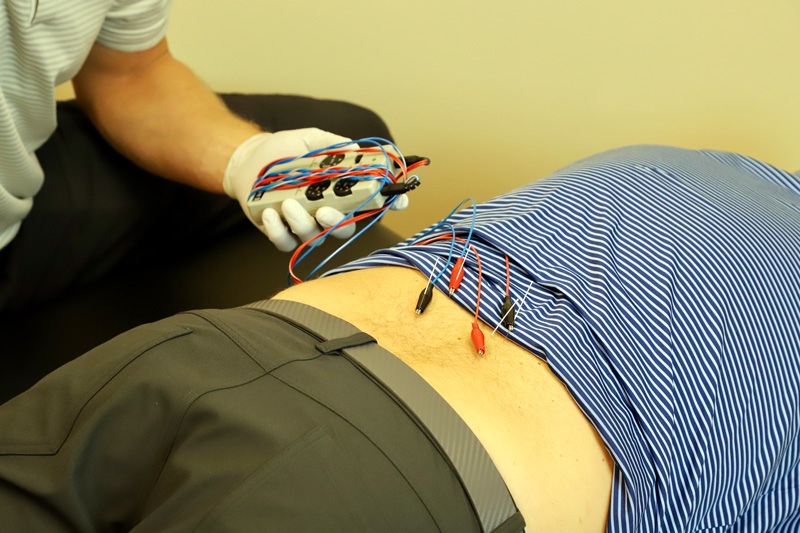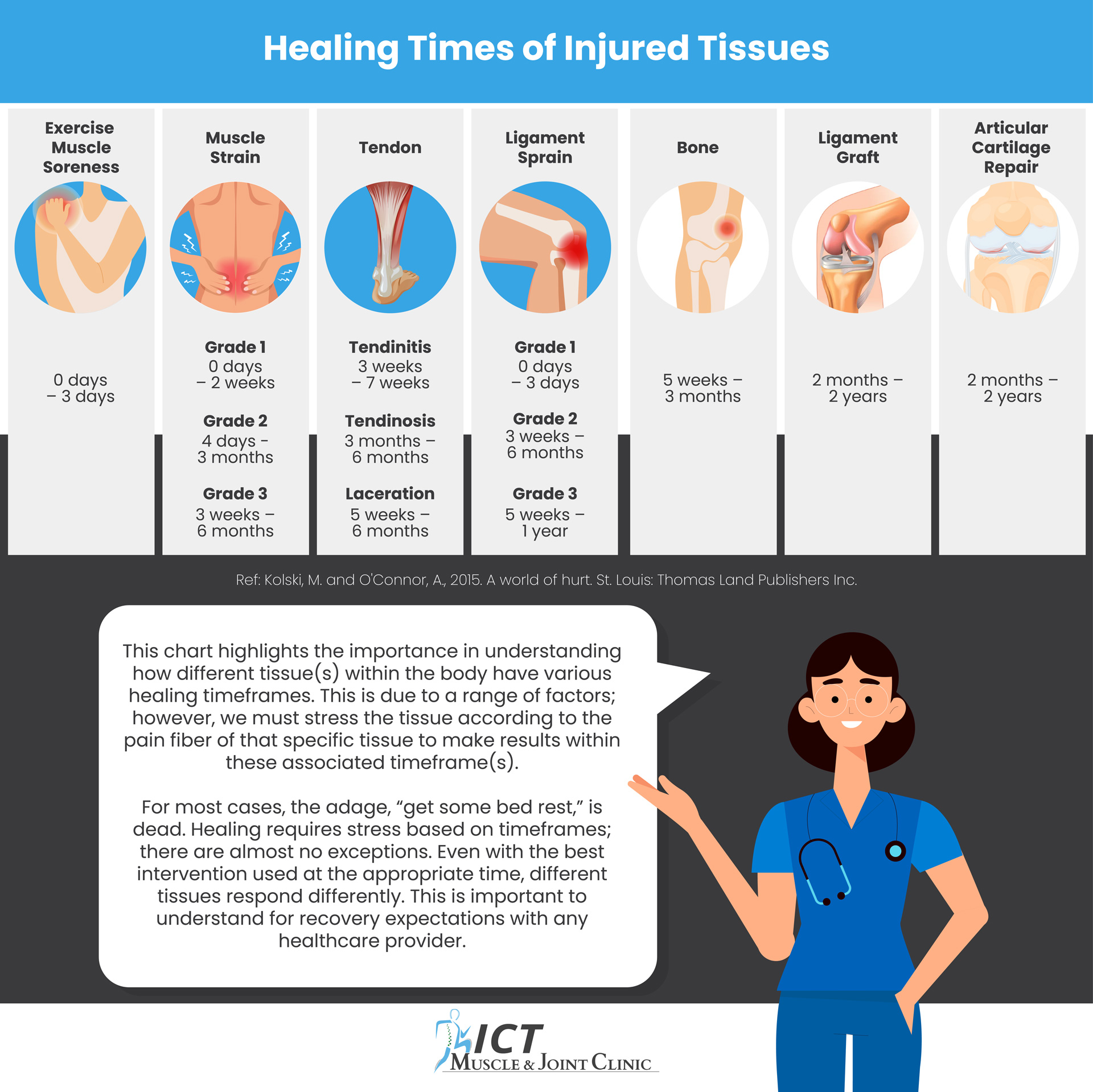Custom Foot Orthotics
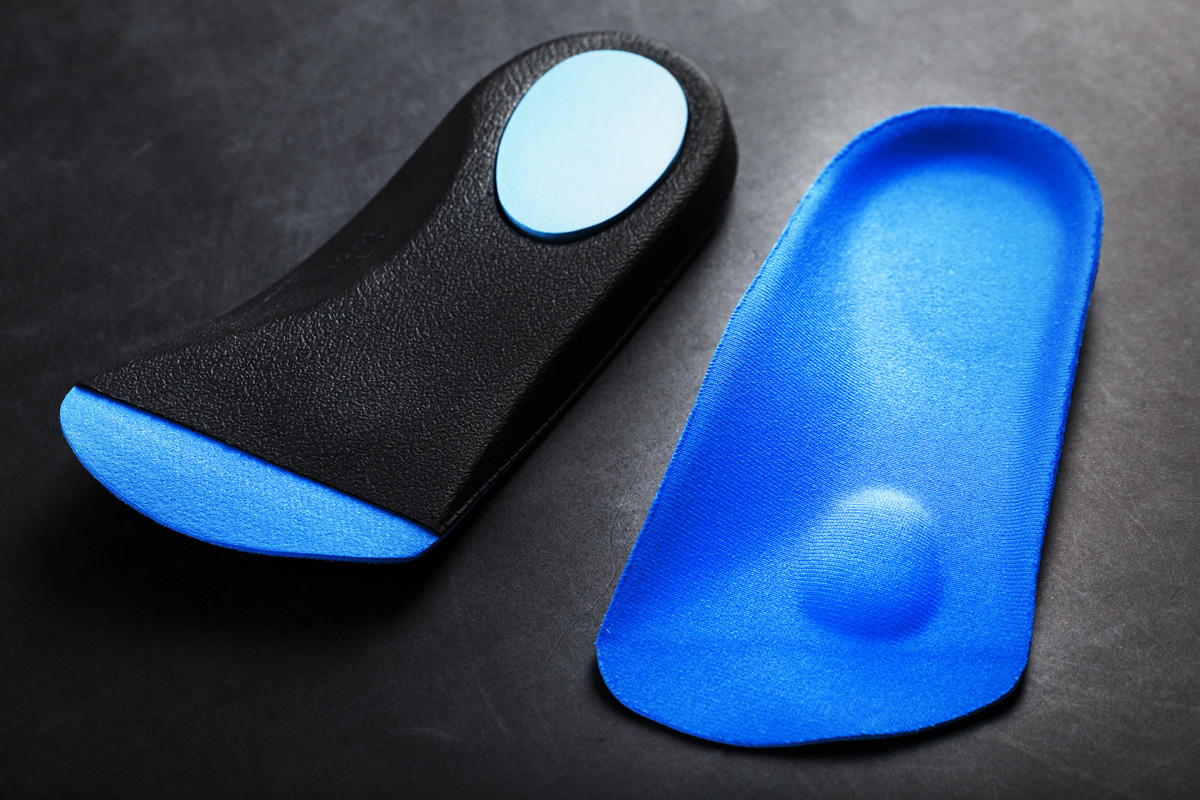
Custom Foot Orthotics
At ICT Muscle & Joint Clinic, our unique, pain classification, assessment system will indicate if a person does or does not need a custom foot orthotic. Other interventions, not local to the foot, may address the issue at hand more effectively. We do not build custom foot orthotics based upon another individual’s thoughts or recommendations including: another healthcare provider, web search (i.e. WebMD), or Google recommendation. When we build custom foot orthotics, we use it as an integration, or extension, of an advanced pain categorization system. There are many factors that can lead to foot pain; however, multiple factors including age, gender, and movement or sport-requirements should be considered prior to orthotic fittings.1
Our system is incredibly thorough and will identify the appropriate course of action when appropriate. If we do not follow this approach, then it is an ethical, moral, and financial disservice to customers. We pride ourselves on using this pain categorization system, which directs a patient’s care flow.
Are Foot Orthotics Worth It?
Worth or value can also be viewed as “beauty is in the eye of the beholder.” What is valuable, from one person to another, may be different. First answering subjective questions, then working to objectify them into monetary means, might be the best approach for some. While others may process the decision of value by working backward from monetary cost to subjective emotions or desires. The rate of purchase of an orthotic may be a factor in a person’s decision making as well (i.e. once every 5 years or twice per year). Because there are many factors for a person to consider in purchasing a custom foot orthotic, we can help educate you ahead of time on what the research indicates.
Click on any item below to learn more about Custom Foot Orthotics.
-
Foot Structure, Pronation, Foot Pain, and the Research
Once upon a time, physical therapists, podiatrists, and chiropractors alike swore pronation (foot dropping inward to the ground) was the root of all evil. Thankfully, we are a few years past this thought process. However, some within these industries, and the running industry alike, will still regurgitate this old wives’ tale. It was, and still can be, communicated to an individual that a foot orthotic will help reduce the amount of pronation in a person’s foot or give them better support. This idea of “better support” is providing the illusion of walking or running pain-free or walking and running faster; research does not support this statement. In contrast, the research supports the opposite, in that a slight pronated foot might produce less injury rates.2 Another way to state this is that a foot that is less supported has decreased injury rates. Pronation or overpronation, as a single factor, is not justification for a custom foot orthotic. This research, in part, is what gave way to the popularity of the minimalist drop or neutral shoe. The foot is designed to move, not be restricted.
With foot orthotics, the research indicates the two extreme foot structures, more so extreme flat feet, may experience benefit with a foot orthotic - over the counter or customized. Reasoning for this is still not clear; however, foot orthotics may distribute pressure away from the heel and forefoot into the arch which in turn increases sensory input throughout the entire foot.3 However, it is important to note, full length orthotics, which support the arch, can decrease musculature and strength of various foot muscle by as much as 17%.4 This study was performed for 12 weeks which targeted young, healthy adults.
We do understand the overall range of pronation is not altered by foot orthotics, but some research suggests controlling the speed of pronation is the ultimate factor in reducing injury rates of these two extreme foot structures.5 A foot orthotic may help slow the speed of pronation down, but it is a short-term fix. Other interventions, dictated by our assessment protocols, produce more effective results in producing long-term pain reduction and performance outcomes.
For both the extremes, high-arched and low-arched individuals, there are additional factors to consider with building or buying an orthotic. We can identify benefit with varus and valgus wedges with these different foot structures.6 These wedges are quite simple in that they support or push the foot by rolling the foot outward or inward.
To recap this section, foot structure alone does not warrant a custom foot orthotic. Other interventions, such as specific exercises and over-the-counter orthotics, may be better alternatives regarding outcomes with pain, performance, and cost than expensive orthotics. Our goal in writing this section is not to scare you away from purchasing a custom foot orthotic but to highlight a genuineness in care you will receive from us if you are considering a foot orthotic or having foot pain.
-
Are Foot Orthotics Covered by Insurance?
Foot Orthotics, without insurance, often cost between $200 to $800. Our orthotics fall in the middle at $400. This is usually for just the orthotic themself, not associated visits or fittings. At this time, foot orthotics may be a covered service for those with diabetic neuropathy or another form of leg or foot neuropathy only. There are hidden gem insurance plans which will cover some or all the costs. However, most insurance plans do not cover the cost(s) of foot orthotics. They might cover the appointment fees but not the actual foot orthotics themselves. Foot conditions surrounding neuropathy and diabetes, may be partly or completely covered by an individual’s insurance company, policy, and plan.
Because of this insurance nuance, we will not bill to insurance(s) for orthotics. However, we can provide a receipt of purchase which you can in turn submit to your insurance company. Sometimes, an insurance company may allow this purchase to be distributed into your in-network deductible or out-of-network deductible. We, ICT Muscle & Joint Clinic, are not stating it will be covered or are subjugated to what an insurance may tell you in difference to this statement.
Why are Foot Orthotics Not Covered by Insurance?
There are a few reasons behind this. Currently, custom foot orthotics are considered preventative under Medicare guidelines. Unfortunately, health insurance plans do not cover preventative care treatments or plans. With a deeper dive, insurance companies used to cover foot orthotics. Within the rumor mill, healthcare providers used to prescribe foot orthotics like opioids, “Want some? Come get some.” and bill to the insurance companies as such. Due to this approach, it became costly for the insurance companies and businesses, who pay a large share of an employee’s insurance plan, to keep covering as a provided service without having to increase cost to the employee’s monthly premium through the insurance plan.
Is your Foot Pain a Foot problem?
According to the EXPOSS study, 29% of the time, a foot problem is not foot in origin – it’s originating within the spine.7 How often have you had your spine thoroughly evaluated when seeking help for foot pain? Chance is, never; this is a shame. The low back can be a source of foot pain without having pain (i.e., back problem does not have to produce back pain). A back problem can produce foot pain without complications or pain elsewhere.
Without evaluating the low back as a source of your foot pain, then there is automatically a 29% reduction in producing positive outcomes. Morally, it is an injustice for us to consider an orthotic without assessing for the source of pain – especially considering a $400 foot orthotic that would then produce limited positive results at best. Tired of this approach? Us too. Therefore, you should seek care with an ICT Muscle & Joint Clinic doctor before a foot orthotic is considered. Let us be your traffic controller in the never-ending world of healthcare sales.
ICT MJC’s Extra Step to Foot Pain with Runners
If you are having foot pain and are a runner or attempting to get into running and having foot pain, other physiobiological factors, metabolic (energy efficiency) factors, and training programming may be the ultimate cause of your pain. Over the years, we have identified that addressing these factors can be vital to producing long-term results with fewer re-injury rates. Simply stated, the causative factor to mechanical pain or problems is not always mechanical in nature.
ICT MJC Approach to Foot Orthotics
As stated above, we assess everyone in a multitude of ways. We are not a one-trick-pony. If we do not take this approach, you as the customer waste time and money; this is a disservice. If a foot orthotic is warranted, which is seldom, we go through several aspects in building your foot orthotic.
-
Stance foot assessment (left vs. right)
-
Gait (walking pattern) motion videos
-
Motion induced ink pedographs
-
Palpation of restricted joints and tight tissue structures
-
Foam casting/molding
-
Consideration of cheaper orthotic interventions
We are moving beings and must be assessed as such. The documentation and collection of all this is processed and applied to your personalized orthotics by our chiropractic doctors and sent out for construction by Xtreme Footwerks.
Our Orthotic Partnership
We are excited and proud to offer you these top-of-the-line custom foot orthotics! We utilize our partnership with Xtreme Footwerks in Idaho Springs, Colorado. Shawn Eno, founder of Xtreme Footwerks, is a highly sought-after, board certified pedorthist who incorporates your entire assessment, highlighted above, into his moldings.
What Are Foot Orthotics Made of?
Through our partnership with Xtreme Footwerks, our custom foot orthotics consist of multi-layer EVA (Ethylene Vinyl Acetates). We utilize multi-layer EVA because long term orthotic users often prefer custom for their increased durability (graphite orthotics can last up to 15 years) and versatility even though custom foot orthotics have not been shown to not be more effective than over the counter orthotics.8 Over time, the increased durability of these insoles are more cost-effective.
Patients We Automatically Consider for Foot Orthotics May Have the Following Conditions:
-
Tibial Torsion, Valgum, Varum
- Tibial torsion is when a shin bone grows in a twisted formation.
- Tibial Valgum is bowing outwards of the shin bones.
- Tibial Varum is bowing inward of the shin bones.
-
Varus to Valgus Forefoot
- Similar to tibial torsion, the front part of the foot (forefoot) grows into a twisted position regarding the rearfoot (i.e. heel bone).
-
Hip Rotation (Retroversion and Anteversion)
- Either of these variants are not a definitive reason for foot orthotics. However, depending on a person’s movement requirements (due to work or leisure) orthotics might be considered.
-
Bunion Formation or Restricted Big Toe
- Bunion formations, of the big toe joint, are typically a byproduct from movement limitations within the foot. Gout is not the number one cause of bunions.
- Bunion formation, with the big toe moving inward, is the number one cause of falls within the elderly population.
-
Navicular Drop
- This is often thought of as the “instep” of the foot. With a significant navicular drop a person might not be able to achieve a relatively ideal midfoot position during certain phase of the gait process.
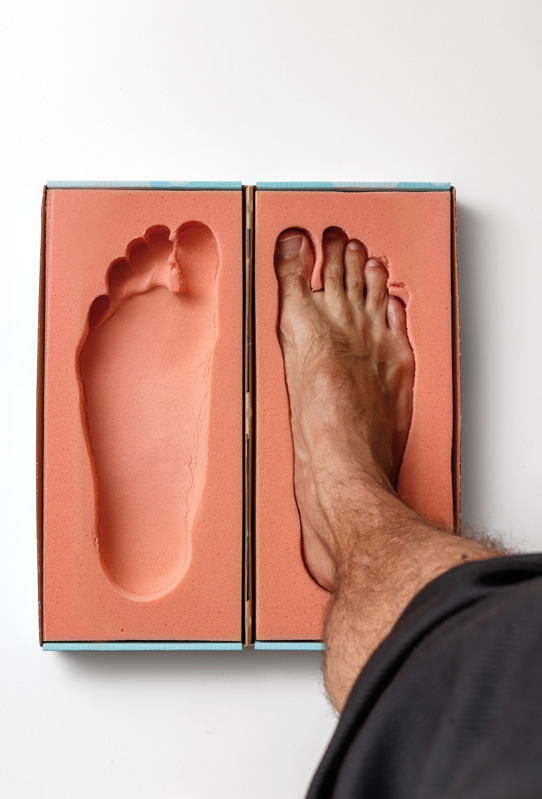
Alternative Foot Orthotics
We love the ToePro Pad. It’s a game changer foot, ankle, and calf rehab. It provides various levels of cushion and support which we have not seen matched by other products.
When it comes to cushion within a foot insole, Sorbothane products are the best. The wonderful benefits of Sorbothane are its affordability at roughly $20-30 and it being the most shocking absorbing foot orthotic material on the market! Sorbothane is a strong option for those who must stand all day. The downside to Sorbothane, is it being the most shock absorbing material, it can also deplete in rigidity faster (i.e. you may have to buy them once every few months). However, weighting a cost benefit analysis, a person can go through a lot of Sorbothane inserts before hitting the cost of a custom foot orthotic.
are not the cheapest option on the market, but they are considered to be the gold standard in a passive appliance helping open up the toes. Over the decades our shoe ware has caused restrictions in our toes and feet. Correct toes work to correct that problem.
Content written by Dr. Keith Sparks, DC | Dynamic Neuromuscular Stabilization (DNS) Certified Exercise Trainer, Functional and Kinetic Treatment with Rehabilitation (FAKTR) Certified, Selective Functional Movement Assessment Certified (SFMA) Certified, Functional Movement Systems (FMS) Certified, Buteyko Instructor
Content written by Dr. Samuel Reals, DC | Rethinking Running Rehab - Part B Gait Analysis and Rehab of Runners
View Citations and References
1 Michaud T. Injury-Free Running: your illustrated guide to biomechanics, gait analysis, and injury prevention. Lotus Publishing. 2021
2 Nielsen RO, Buist l, Partner ET, et al. Foot pronation is not associated with increased injury risk in novice runners wearing a neutral shoe: a 1-year prospective cohort study. Br J Sports Med.2014;48(6):440-447. doi:10.1136/bjsports-2013-092202.
3 Franklyn-Miller A, Wilson C, Bilzon J, McCrory P. Foot orthoses in the prevention of injury in initial military training: a randomized controlled trial. Am J Sports Med. 2011;39(1):30-37. doi:10.1177/0363546510382852.
4 Protopapas K, Perry SD. The effect of a 12-week custom foot orthotic intervention on muscle size and muscle activity of the intrinsic foot muscle of young adults during gait termination. Clin Biomech. 2020;78:105063. doi:10.1016/j.clinbiomech.2020.105063.
5 MacLean C, Davis IM, Hamill J. Influence of custom foot orthotic intervention on lower extremity dynamics in healthy runners. Clin Biomech. 2006;21(6),623-630. doi:10.1016/j.clinbiomech.2006.01.005.
6 Kogler GF, Veer FB, Solomonidis SE, Paul JP. The influence of medial and lateral placement of orthotic wedges on loading of the plantar aponeurosis. J Bone Joint Surg Am. 1999;81(10):1403-1413. doi:10.2106/00004623-199910000-00005.
7 Rosedale R, Rastogi R, Kidd J, Lynch G, Supp G, Robbins SM. A study exploring the prevalence of Extremity Pain of Spinal Source (EXPOSS). J Man Manip Ther. 2020;28(4):222-230. doi:10.1080/10669817.2019.1661706
8 Landorf KB, Keenan AM, Herbert RD. The effectiveness of foot orthoses to treat plantar fasciitis: a randomized trial. Arch Intern Med. 2006;166(12):1305-1310. doi:10.1001/archinte.166.12.1305.
Search our Library for more information surroundings various health topics, facts, and myths of healthcare, and much more. Sign up for our Newsletter to receive monthly health tips and our 10 Tips to True Health.
If you are in the Wichita, KS, area and are having frustrations, complications, or stagnant results with care, then contact us for in-person help with our unique healthcare approaches. If you are not within the greater Wichita, KS metro, we have created amazing Telehealth and Video Programs to provide you the same high-quality care. Contact our professional chiropractic staff at our East Wichita clinic or West Wichita clinic about possible treatments for your muscle, joint, nutrition, and health-related concerns today.
We only affiliate with products, services, and merchants that we believe will provide value to individuals who are curious on the topic or product at hand. We only endorse products, services, and merchants that we have personally used/tested and consider of the highest quality standard to which a ‘normal’ individual can purchase. There are affiliate links within this page, which means we may get compensated/earn a commission at no extra cost to you if the affiliate links are utilized to make a purchase.




